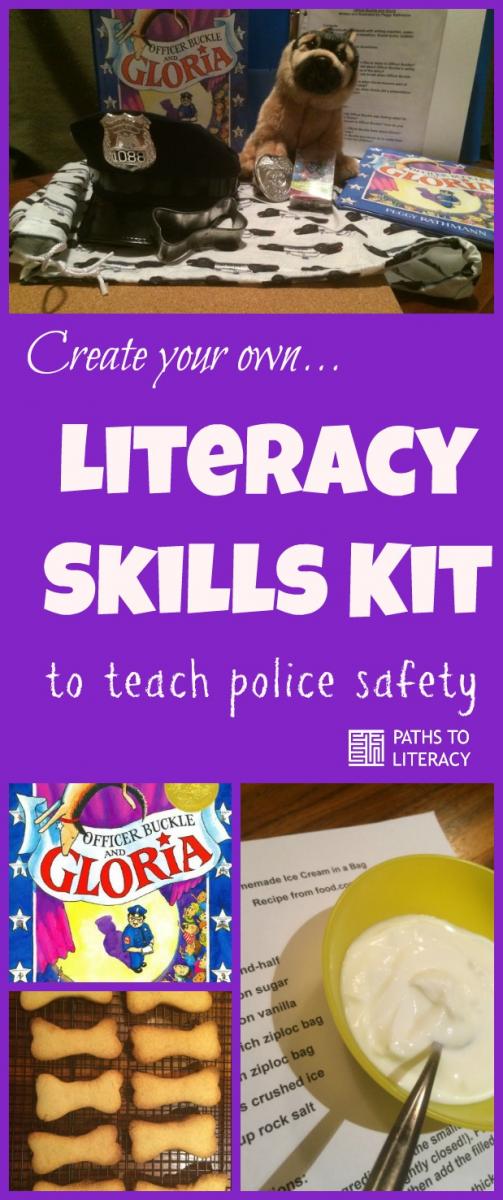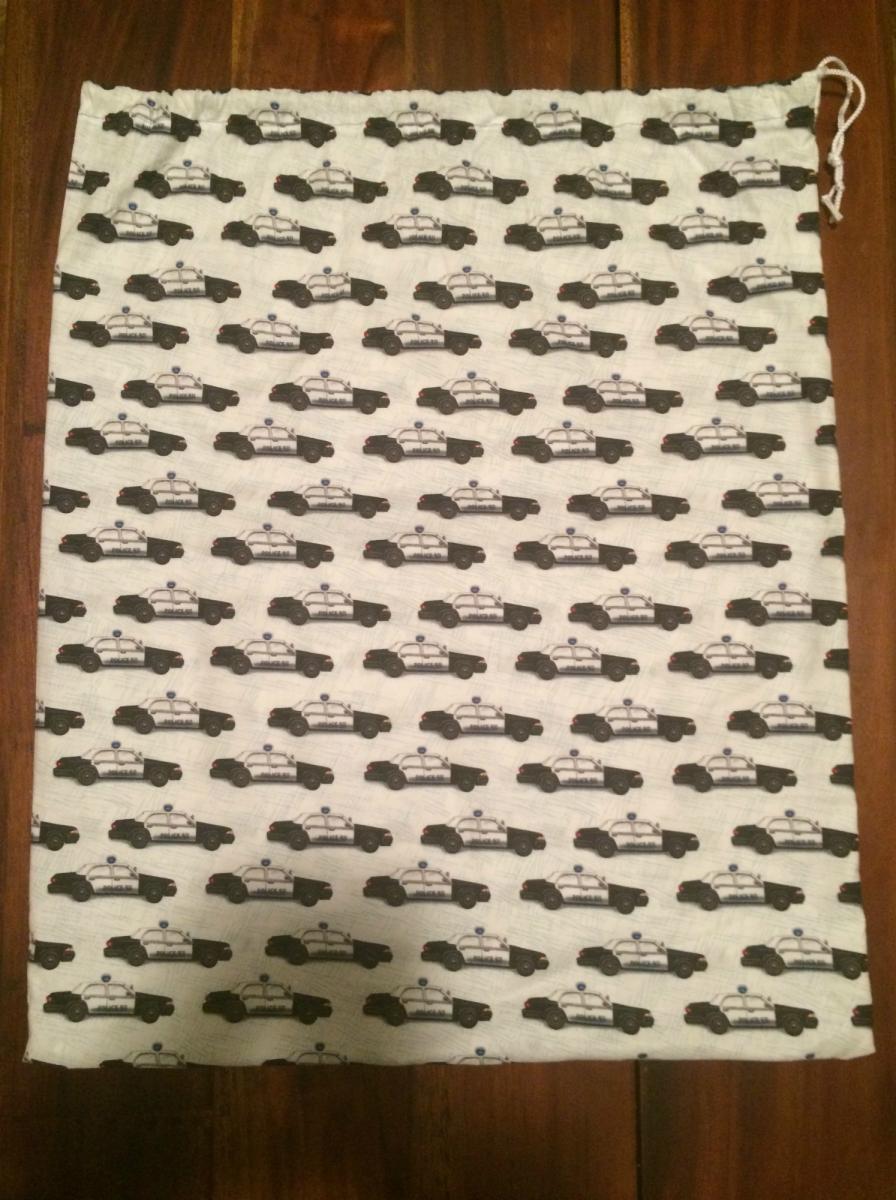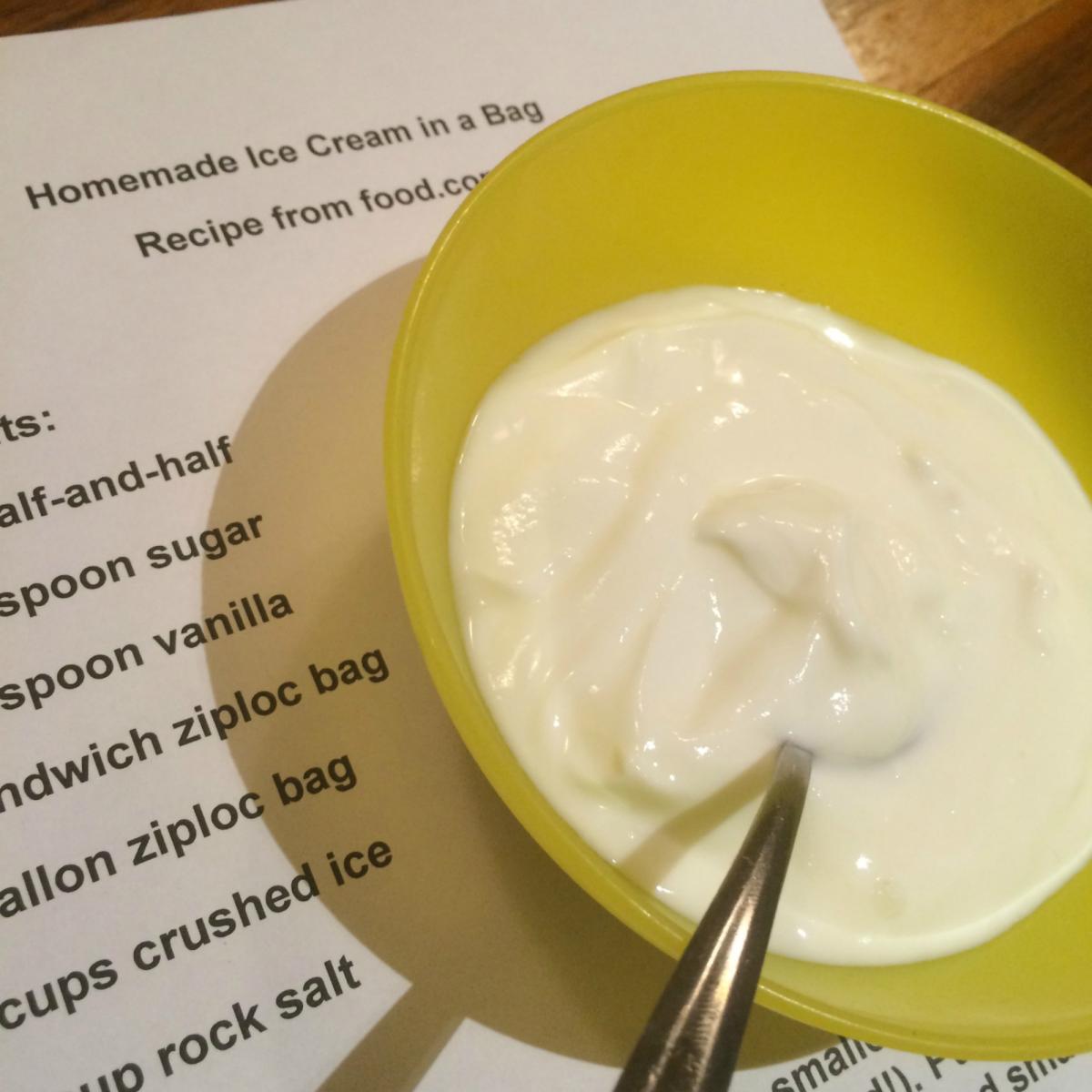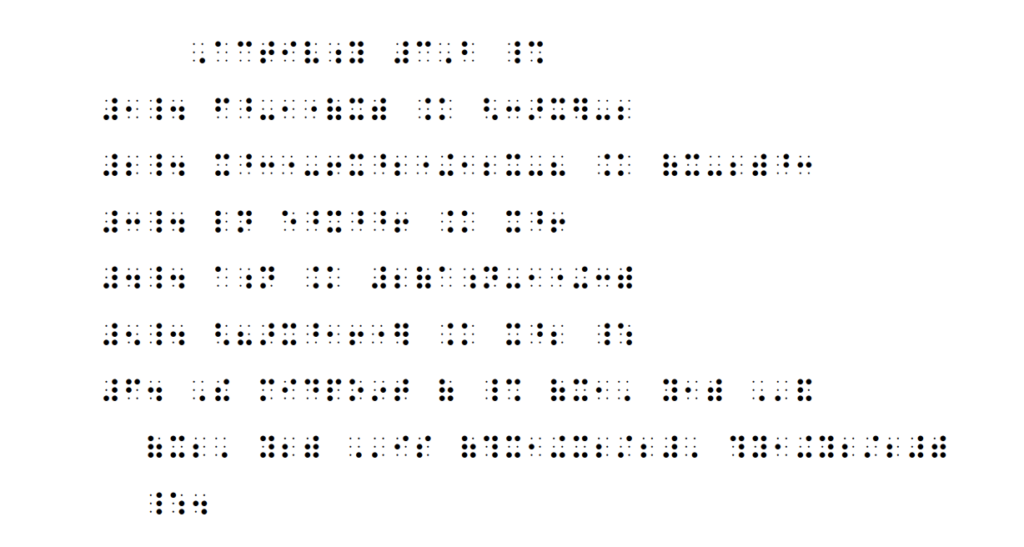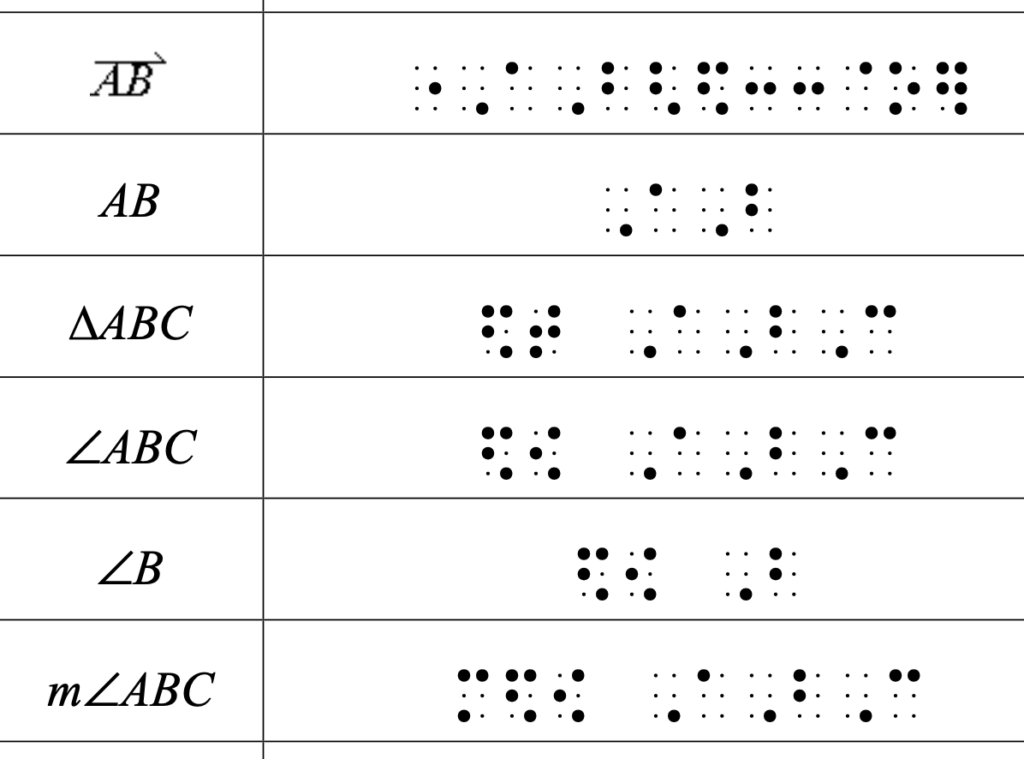By Lisa Pruner and Catherine Summ
Education Consultants, CT DORS- Bureau of Education and Services for the Blind
Overview:
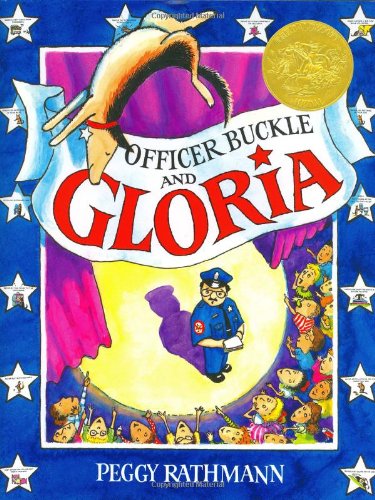
- Officer Buckle and Gloria share everyday safety tips in ways which are engaging and funny for young children. From “never play with matches,” to “always pull the toothpick out of your sandwich,” they make a great team and teach children important lessons about safety and about friendship.
- Due to the physical nature of the comedy in this book, Officer Buckle and Gloria presents a great opportunity to teach children who have visual impairments about some very abstract descriptions. What does “playing dead” mean? What is a “swivel chair” and why shouldn’t you stand in it? It also shares many real safety tips that can serve as a starting point for a unit on safety or community helpers.
- What is a literacy skills kit?
- How is a literacy skills kit used?
- What does the literacy skills kit contain?
- How to sew a literacy skills bag
- Reading the book
- Literacy comprehension questions
- Extended literacy activities
- Police dogs
- Homemade ice cream in a bag
- Rover’s Rewards Dog Biscuit Recipe
- The Best Rolled Sugar Cookies
What is a literacy skills kit?
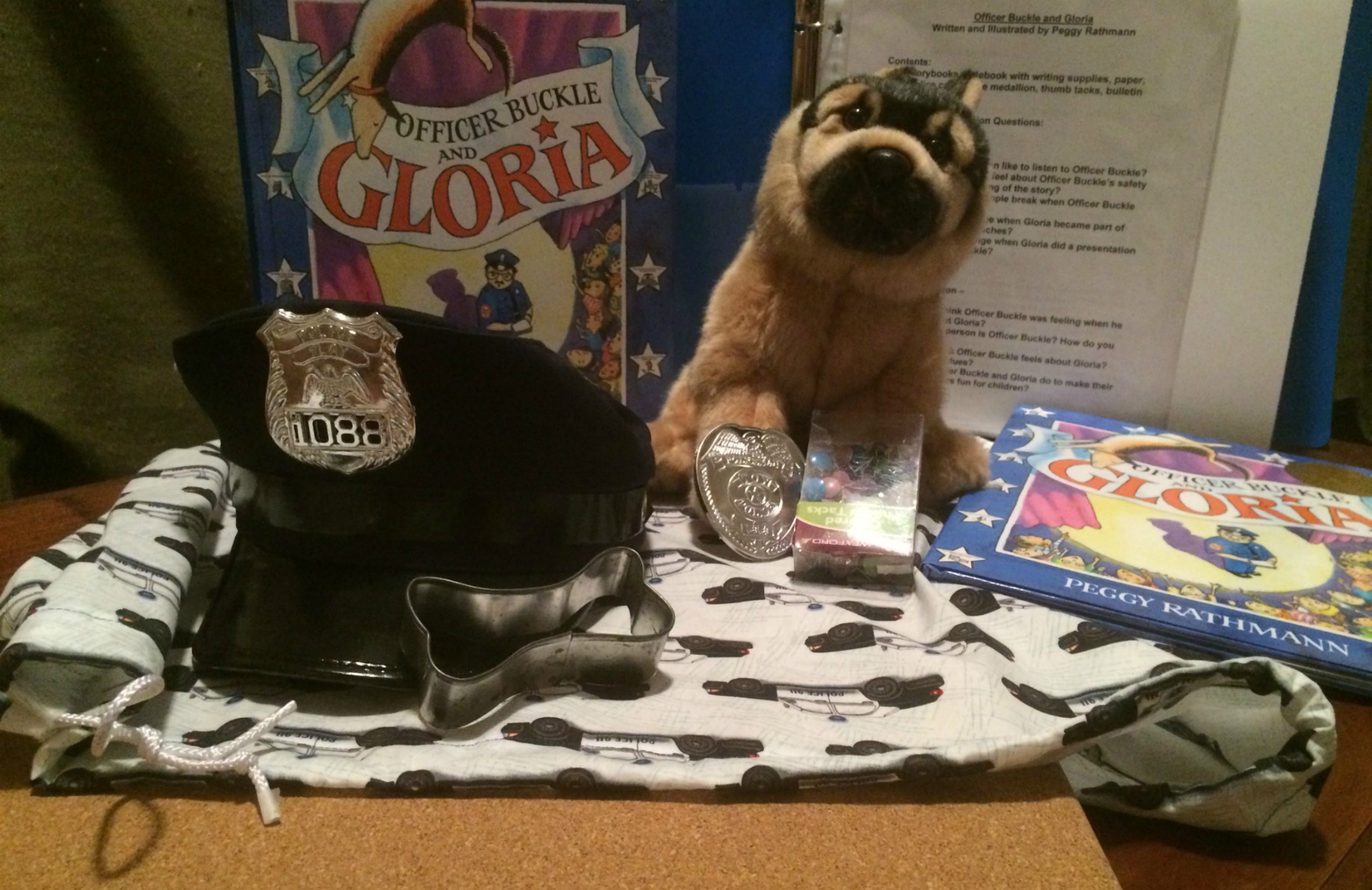 A literacy skills kit is an easily transportable kit (we use handmade bags in fabrics related to the story) containing a carefully chosen children’s book which addresses one specific skill which needs to be taught directly/differently to a child with a visual impairment. Teachers of children with visual impairments call these “Expanded Core Curriculum” (ECC) skills because they are skills which children who don’t see well need above and beyond the regular curriculum. These skills may be as obvious as braille, or less apparent, like using body language correctly or understanding the workings of a smoke detector by tactually exploring it. Literacy skills kits usually contain the book, “props” related to the story, literacy questions at different levels, a list of potential follow-up activities, and a responses journal. Kits were originally designed to be used by a parent and child, but have also been successfully used by teachers and students, as well as groups. This particular kit addresses police safety using the wonderful book, Officer Buckle and Gloria, as well as related props, questions, and activities.
A literacy skills kit is an easily transportable kit (we use handmade bags in fabrics related to the story) containing a carefully chosen children’s book which addresses one specific skill which needs to be taught directly/differently to a child with a visual impairment. Teachers of children with visual impairments call these “Expanded Core Curriculum” (ECC) skills because they are skills which children who don’t see well need above and beyond the regular curriculum. These skills may be as obvious as braille, or less apparent, like using body language correctly or understanding the workings of a smoke detector by tactually exploring it. Literacy skills kits usually contain the book, “props” related to the story, literacy questions at different levels, a list of potential follow-up activities, and a responses journal. Kits were originally designed to be used by a parent and child, but have also been successfully used by teachers and students, as well as groups. This particular kit addresses police safety using the wonderful book, Officer Buckle and Gloria, as well as related props, questions, and activities. See also our earlier posts: Creating Literacy Skills Kits to Target the Expanded Core Curriculum and Creating a Literacy Skills Kit to Teach Fire Safety.
How is a literacy skills kit used?
Explore the contents of the bag together to preview the topic
- Read the story (in print of braille) together, using included manipulatives as “pictures” to illustrate the story.
- Discuss the story – What did you enjoy? Do you want to read more books like this?
- Review the literacy comprehension questions and/or create your own questions.
- Read through the list of extended literacy activities. Choose one activity – or try them all!
- Provide feedback – have the student write/draw/braille about the story or one of the activities in the reader response journal. Also note any ideas for questions or extended literacy activities that were not included in the original ideas.
- Share the kit! Make police safety accessible for everyone!
What does the literacy skills kit contain?
The police safety themed literacy skills kit should include the following items:
- Two copies of Officer Buckle and Gloria by Peggy Rathmann – one print and one braille. Print copies available from Barnes and Noble (BN.com) and Kaplan.
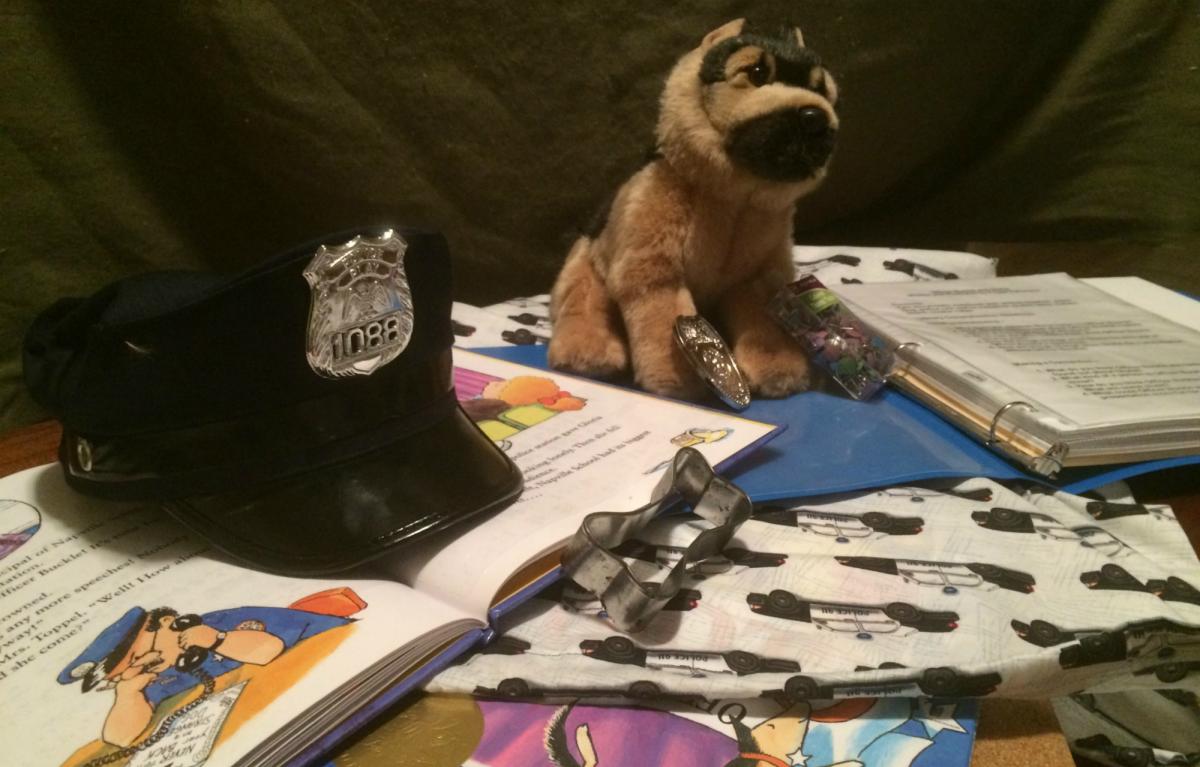
- Eraser
- Crayons
- Soft pencil case with binder ring holes
- Toys R Us plush 9 inch German shepherd – black and tan, available from www.amazon.com
- Junior Police Cap – standard, available from www.amazon.com
- Police medallion, available from a toy store
- Thumb tacks
- Bulletin board
- Bone-shaped cookie cutter
- Print AND braille copies of the kit instructions
- Three ring floppy braille binder, available from American Printing House for the Blind (www.aph.org, product catalog number 1-04295-00)
- Dark lined paper, available from www.aph.org
- Braille paper, available from www.aph.org
- Black markers
- Dark lead pencils
- Plastic page inserts
How to sew a literacy skills bag
- Select a piece of police themed fabric that is ¾ yard long. Select a cord that is as wide as the fabric, plus an additional 10”.
- Make a pocket for the drawstring: Fold the top of the fabric down 1” and iron the fold. Fold it another inch. Iron on the fold, pin the fabric in place and sew along the bottom of the fold, creating an opening for the drawstring.
- Sew the bag: Fold the fabric widthwise, right side of the pattern together.
- Sew along the bottom of the bag and up the side, stopping before you reach the opening and closing for the drawstring. Secure your seam.
- Turn the bag right side out and insert the drawstring through the opening. Attach a safety pin to one end of the cord to draw it through.
- Tie the cord ends together and draw the bag shut.
The following items should be stored in the pencil case: crayons, eraser, dark lead pencils, markers
- Pencil case
- Kit instructions (print)
- Police dog text (print)
- “Homemade Ice Cream in a Bag” recipe (print)
-
“Rover’s Rewards” dog biscuit recipe (print)
-
“The Best Rolled Sugar Cookie” recipe (print)
-
Kit instructions (braille)
-
Police dog text (braille)
-
“Homemade Ice Cream in a Bag” recipe (braille)
-
“Rover’s Rewards” dog biscuit recipe (braille)
-
“The Best Rolled Sugar Cookie” recipe (braille)
-
Dark lined paper
-
Braille paper
The following items should be stored in the literacy bag:
- Reader response binder
- Print and braille copies of Officer Buckle and Gloria
- Plush dog
- Police cap
- Police medallion
- Thumb tacks
- Bulletin board
- Cookie cutter
Reading the Book
Officer Buckle and Gloria
Written and Illustrated by Peggy Rathmann
Materials:
Two storybooks, notebook with writing supplies, paper, dog, police cap, police medallion, thumb tacks, bulletin board, cookie cutter
Literary Comprehension Questions
Initial Understanding
- Why don’t the children like to listen to Officer Buckle?
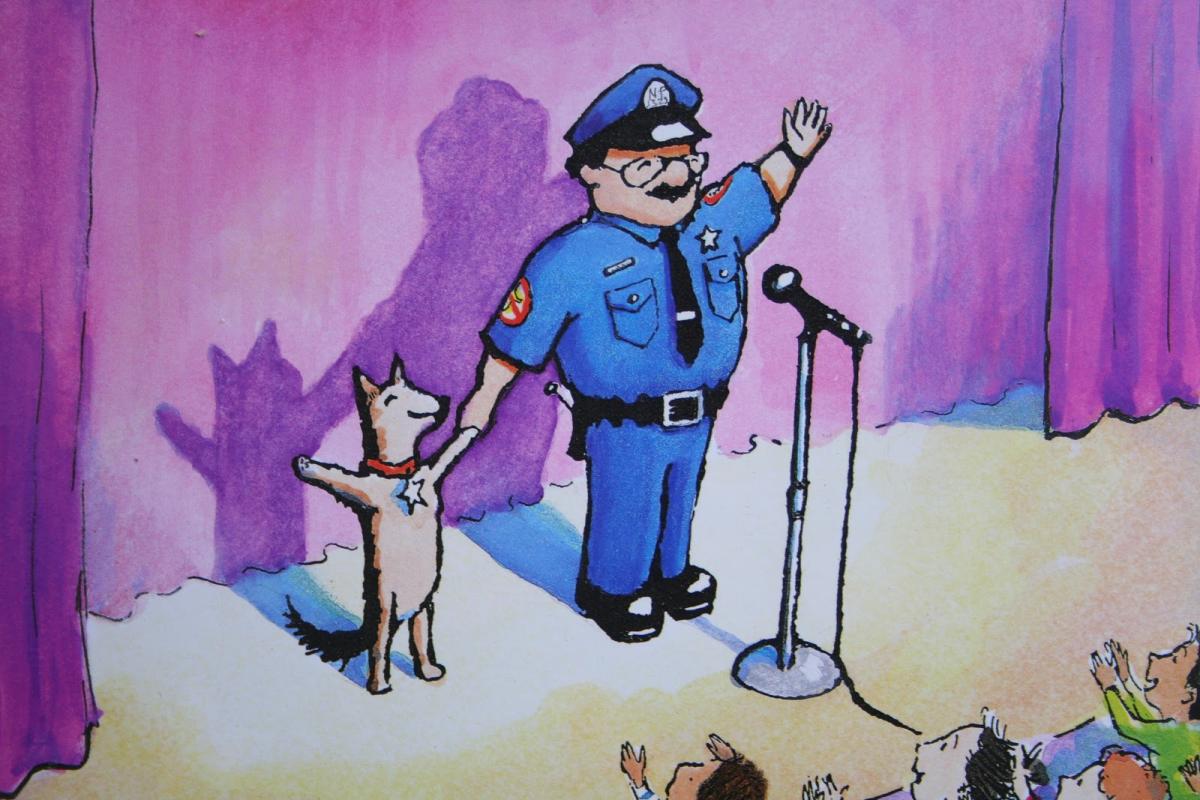
- How did the children feel about Officer Buckle’s safety advice at the beginning of the story?
- What rule did Mrs. Topple break when Officer Buckle came to visit?
- How did things change when Gloria became part of Officer Buckle’s speeches?
- How did things change when Gloria did a presentation without Officer Buckle?
Making a Connection
- What do you think Officer Buckle was feeling when he found out about Gloria?
- What kind of a person is Officer Buckle? How do you know?
- How do you think Officer Buckle feels about Gloria? What are some clues?
- What could Officer Buckle and Gloria do to make their presentation more fun for children?
Taking a Critical Stance
- What causes the problem in the story? (Officer Buckle discovers that Gloria has been stealing the show. His feelings are hurt.)
- How do Officer Buckle and Gloria work out their problem?
Additional questions
- What is the job of a police officer?
- What is a dog trick? Can you think of any?
- What is a thumb tack? What is a bulletin board?
- What is a swivel chair? Why shouldn’t you stand on one? Locate a swivel chair at home or at school and try sitting and spinning on it. Make sure you are with an adult when you do this.
- What is a banner?
- What does “K-9” mean?
- Do you know what position a dog is in when they sit? How is this different from the way people sit? Use the plush dog to demonstrate how a dog sits.
- Do you know how to tie your shoelaces? See links to instructions in the extended literacy activities on shoe lace tying.
- Why did the children sit up and stare? What did Gloria do to make them sit up? (Describe mimicking. Discuss how there are different ways to mimic someone: dress, body language, voice, etc.)
- For Safety Tip #2 use the toy dog as a prop to demonstrate what Gloria did.
- We have included some examples of the thank you letters from the story, as well as a copy of the letter Gloria wrote to Officer Buckle about the accident. Have you ever written someone a thank you letter? Feel free to write one to someone using the paper provided in the binder.
Extended Literacy Activities
- Read the safety tips listed in Officer Buckle and Gloria. Discuss why each rule is so important.
- Contact your local police department to arrange a family field trip.
- Read the added text about police dogs. Did you know that police dogs did so many different things? The text is adapted from this website: http://www.ducksters.com/animals/policedogs.php
- Practice using the telephone:
- There are emergency situations that warrant children be able to make a phone call home or dial 911. Some of these emergency situations can be: a fire, an accident or sudden illness involving a parent or caregiver, as well as other situations.
- The first step is for the child to be able to recognize the numbers on a telephone key pad. This requires regular practice to keep the numbers and the process fresh in their mind.
- Use an old phone or disconnect your phone while you practice. Review the phone key pad and practice making phone calls until the child has the key pad and key numbers memorized.
- It is also important to stress that children should not give out their telephone number to strangers — only to an authorized person, such as when calling 911. Also, it is important to stress that 911 is a number we use only in an extreme emergency and you can outline what those emergencies are.
- Children as young as three have been able to save their parents in an emergency by being able to dial 911 and also provide vital information such as phone and address. It can be a life-saving skill.
- You may want to put a braille and/or large print 911 sticker on the phone as a reminder. Decide on a secret password that only you (parents) and the child know, that would indicate to the child he or she should call 911.
- The BESB literacy skills kit “Tony’s Topsy Turvey Telephone Day” has additional information regarding telephone skills.
- How to tie your shoes:
- Here is a link to a video that explains the “magic fingers” shoe tying method: https://www.youtube.com/watch?v=asCLYuArCx4
- Here is a link to step-by-step instructions on a traditional shoe tying method: http://www.instructables.com/id/How-to-Tie-a-Shoe-2/?ALLSTEPS
- Here is a link to an audio version of Officer Buckle and Gloria narrated by the actor Jonathan Lithgow: https://www.youtube.com/watch?v=pmViPSWwbPY
- For some fun in the kitchen try making the dog biscuit recipe that is included in this kit. Make them for your own dog, if you have one. They would also make a nice gift for a friend who has a dog, or for your community dog shelter. Use the dog bone shaped cookie cutter included in this kit, or one that you already have.
- If you want to make dog biscuits for people, use the sugar cookie recipe included in this kit. Feel free to use the dog bone shaped cookie cutter included in this kit, or one that you already have.
- Banana pudding is a fun and easy recipe to prepare. You can get a box of instant banana pudding from the grocery. Prepare it according to the packaging instructions. Enjoy and remember not to spill it on the floor!
- In the story, Officer Buckle and Gloria really enjoyed eating ice cream. We have included an ice cream recipe for you to try. We hope you like it!
Police Dogs
From the website: http://www.ducksters.com/animals/policedogs.php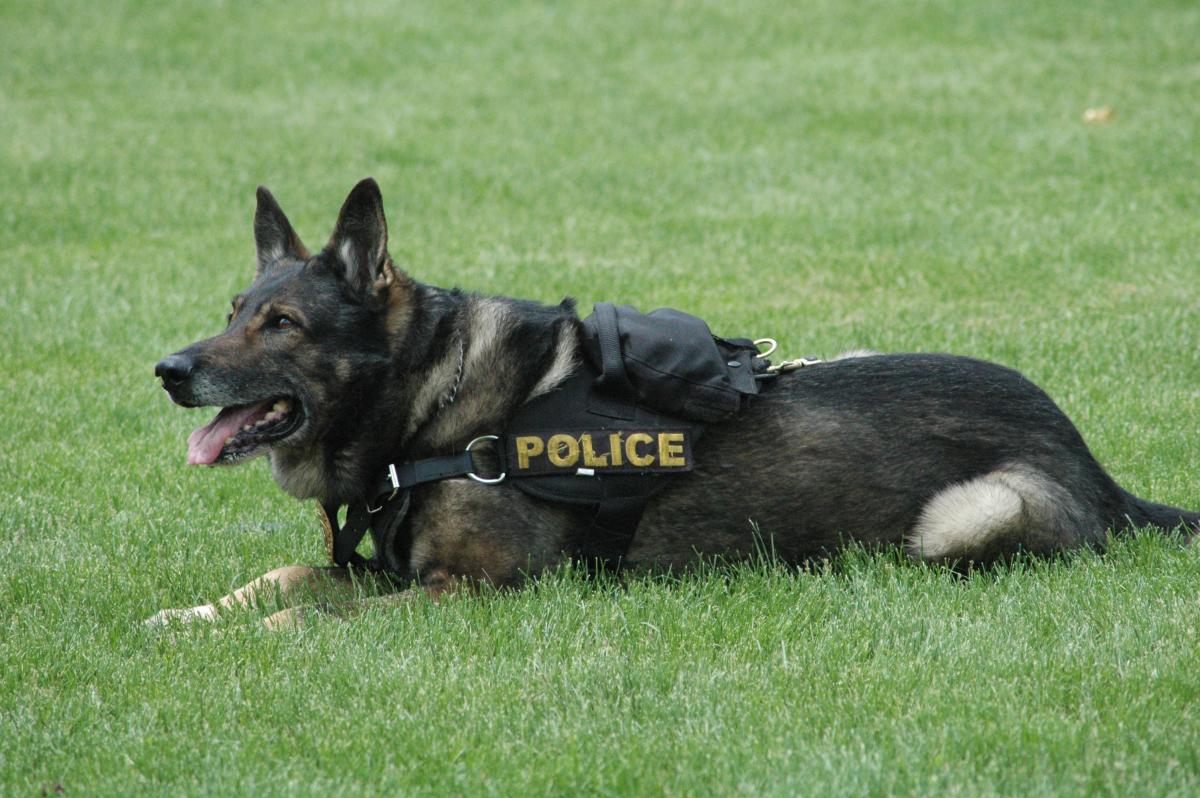

Police dogs are dogs that help the police solve crimes. They have become a major part of law enforcement in the past several years. Police dogs have saved many lives with their unique skills and bravery. They are loyal, watchful, and protective of their police officer counterparts and are often deemed an important and irreplaceable part of many police departments.
What kinds of police dogs are there?
Police dogs today are trained in specific areas. You could say they are experts in their field. Some of the specific police dog roles include:
- Tracking – Police dogs who specialize in tracking use their powerful sense of smell to track criminal suspects or missing persons. Tracking dogs are trained for years and can find even the most cunning criminal. Without police tracking dogs, many a suspect would escape from the police.
- Substance Detectors – These police dogs also use their sense of smell to help police, but in a different way from tracking dogs. Substance dogs focus on detecting a specific substance. Some dogs specialize in recognizing bombs or explosives. These brave dogs are trained not only in detecting the explosive, but also how to respond (very carefully!) and safely to let their officer partner know where the explosive is located. Other dogs may focus on illegal drugs. These dogs help save officers from having to slowly search by hand through luggage or a car or other areas by quickly determining if an illegal substance is near.
- Public Enforcement – These police dogs assist officers in maintaining order. They may chase down a criminal suspect and hold them while the officer arrives or they may just guard an area (like a jail or prison) to keep suspects from escaping.
- Cadaver Dogs – Although it sounds kind of gross, these police dogs are trained in finding dead bodies. This is an important function in a police department and these dogs do it well.
Could my Poodle be a police dog?
Well, your poodle may be a great dog, but it probably wouldn’t be a great fit for a police dog. Police dogs need to have very special and specific training. There are many different breeds of dogs that are trained in police work. What breed often depends on the type of work they will do. Some of the most popular breeds today include German Shepherds and Belgian Malinois, although other dogs like Bloodhounds (good for tracking) and Beagles (good for drug detecting) are used as well. Regardless of what breed they are, police dogs are usually trained from puppies to learn their job.
What happens to Police dogs when they retire?
Police dogs are usually treated as heroes. Many times they go to live with their human police officer partner. They have spent years with this person and come to think of them as family, so this works out well for both the officer and the dog.
Homemade Ice Cream in a Bag
Recipe from food.com
Ingredients:
½ cup half-and-half
1 tablespoon sugar
1⁄4 teaspoon vanilla
1 sandwich ziploc bag
1 gallon ziploc bag
3 cups crushed ice
1⁄3 cup rock salt
Directions:
- Put first 3 ingredients in the smaller Ziplock bag and seal bag (Make sure it is tightly closed!). Put ice and rock salt in the larger bag and then add the filled small bag. Seal the large bag.
- Squeeze bag until ice cream is thickened, about 10-15 minutes.
- Remove small bag, unseal, and eat with spoon.
- No need to even dirty a bowl!
Rover’s Rewards Dog Biscuit Recipe
¾ cup hot water
1 bouillon cube (chicken or beef)
1/3 cup butter
½ cup powdered milk
1 egg – beaten
3 cups whole wheat flour
- Place bouillon in water and microwave for 1 minute.
- Place softened butter in large bowl.
- Pour hot water over butter and stir.
- Stir in powdered milk.
- Add egg.
- Add flour, 1 cup at a time, mixing well after each addition. Add enough flour to make a stiff dough. Knead until smooth.
- Roll to ½ inch thickness and cut out with cutters.
- Place on non-stick or greased cookie sheet. Bake at 325 for 50 minutes, until hard. Allow to cool and dry out.
- Makes approximately 30 small biscuits.
The Best Rolled Sugar Cookies
Recipe by Jill Saunders
From Allrecipes.com
Ingredients:
1 ½ cups butter, softened
2 cups white sugar
4 eggs
1 teaspoon vanilla extract
5 cups all-purpose flour
2 teaspoons baking powder
1 teaspoon salt
Directions:
- In a large bowl, cream together butter and sugar until smooth. Beat in eggs and vanilla. Stir in the flour, baking powder and salt. Cover, and chill dough for at least one hour (or overnight).
- Preheat oven to 400 degrees F (200 degrees C). Roll out dough on floured surface ¼ to ½ inch thick. Cut into shapes with any cookie cutter. Place cookies 1 inch apart on ungreased cookie sheets.
- Bake 6 to 8 minutes in preheated oven. Cool completely.
